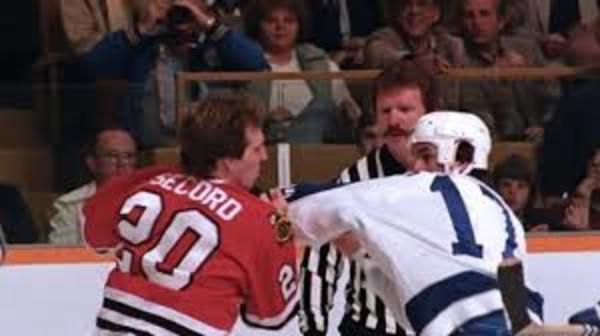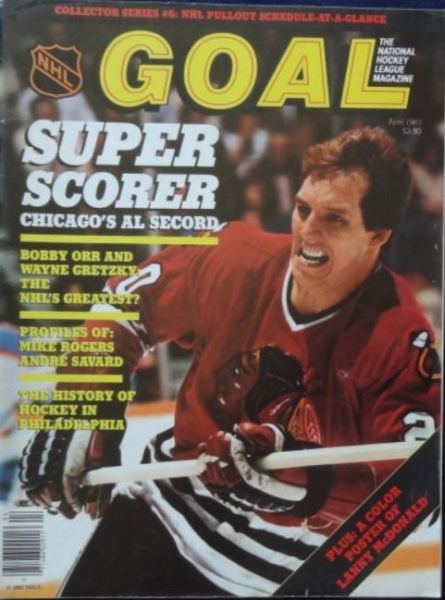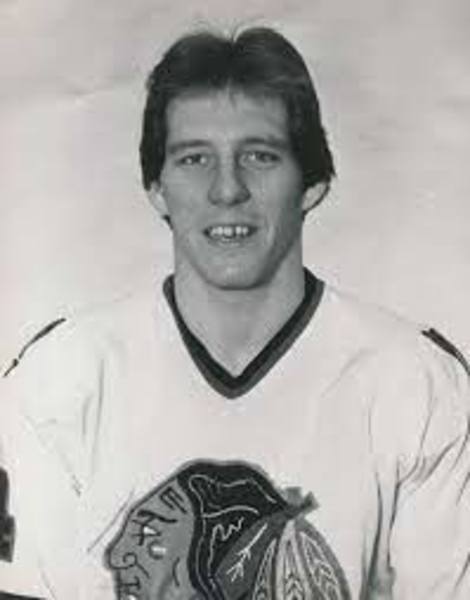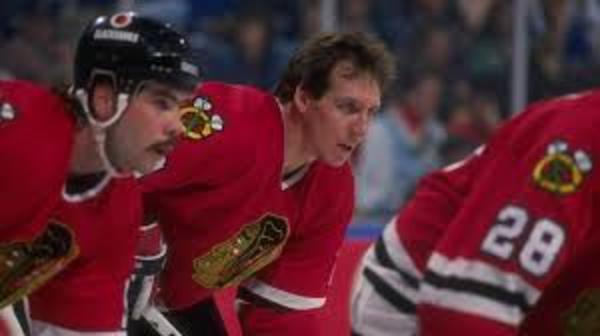
CHICAGO FIGHTER SERIES: Al Secord, Blackhawks Best Pure Boxer
Secord caught the Boston Bruins eyes and reached the NHL by playing tough. Once he arrived in Chicago, the eventual American Airlines captain's career took off as a high scorer.
 CHICAGO FIGHTER SERIES: Al Secord, Blackhawks Best Pure Boxer
CHICAGO FIGHTER SERIES: Al Secord, Blackhawks Best Pure BoxerAl Secord said his father, also named Al, didn't force him to play hockey in their Northern Ontario hometown of Espanola.

But once the younger Secord took to the ice and enjoyed it, his dad encouraged and supported his son.
That included guiding the future NHLer to more competitive Tier II junior hockey in the Toronto area, and then major junior play in the Ontario Hockey League (the OHA in those days). And the younger Secord's calling card was, first and foremost, physical play.

"I knew that if Al were to make it, he had to play aggressively," the elder Al Secord told me in a phone interview in the 1980s. "In one of his first games, I remember Al hit some kid and hurt him. He was really upset and said he wasn't doing to body check any more.
"Well a few games later someone really racked up Alan. After that he learned it was better to give than receive."
In 1976-77 at age 18, Al Secord Jr. started to make a big impression and caught a break. He switched from playing defense to left wing with his OHA team, the defending Memorial Cup Champion St. Catharines Fincups. Secord rang up 343 penalty minutes, with 32 goals and 34 assists, in 57 games on a junior team that was known for mixing it up with opponents under legendary coach Bert Templeton.
After one more junior season, Secord was drafted in the first round (16th overall) by Boston in 1978 and muscled his way into the NHL with the Bruins as a tough guy. The Blackhawks acquired him from Boston for defenseman Mike O’Connell in December 1980.

Secord had worked on his fitness since he was a kid, and was one of the strongest, most chiseled players of his era. He also dabbled with boxing, as in with gloves and in a ring. A scheduled bout was cancelled by Canadian amateur athletic officials who may have feared what Secord might do to his opponent.
“I wasn’t the most skilled guy earlier in my career and I knew what my strengths were,” Secord once said. “They were looking for physical players. That kept me in the game for years then developed in scoring some some goals, getting some assists and contributing in other ways.”

After Secord arrived in Chicago, he skated on a line with Hall-Of Fame center Denis Savard and his offensive number surged. Secord scored 44 goals and 75 points to go with 303 penalty minutes in 1981-82 by opening space for Savard and claiming his own territory near the opponent’s net.
Secord upped his training even more the following summer at a hockey camp, adding plyometrics and other then-new elements to improve core strength and explosiveness. It paid off.
The next season, right wing Steve Larmer joined Secord and Savard to create one league’s top forward trios. Secord scored 54 goals, including a league-leading 20 on the power play, while toning down his penalty minutes to 180 by picking his spots for skirmishes. Larmer potted 43 goals and won the Calder Trophy, and Savard fired in 35 goals to go with 86 assists.

But Secord still dropped the gloves, ending up with 92 fights in a Blackhawks sweater — 17 against the despised division rival Minnesota North Stars. Here’s one of his tussles with Detroit heavyweight Joe Kocur. https://www.youtube.com/watch?v=a0t9oTJDUHA
What was originally termed an "abdominal injury" limited Secord to 14 games in 1983-84 and 51 in '84-85. It was determined later that Secord, who enjoyed bike training, had overused and shortened his iliopsoas muscles, the thick bands (like tenderloins) that run on both sides of the body from the lumbar spine through the groin and around to the lower abdominals. The "psoas" muscles control and drive hip flexion/knee raising and are taxed heavily by skaters and cyclists. They also engage when someone is seated. Now, hockey players, cyclists and other athletes — along with trainers — have knowledge and exercises of how to cope with the condition.

Secord got back on track with a 40 goals in 1985-86 with Chicago, then 29 the following year. He dropped his gloves a few more times, too, racking up 397 penalty minutes over the two seasons.
After stints with Toronto and Philadelphia, Secord returned to the Blackhawks in 1989-90 for a 43-game finale. He finished his pro career with Chicago Wolves from 1994-96, giving the then-new IHL team added box office appeal.
An aviation enthusiast since he was a kid, Secord became a commercial pilot and moved up to the left-side captain’s seat on American’s Airlines mainline jets. See this great video from American:

We don't know if Secord ever had to subdue an unruly passenger.